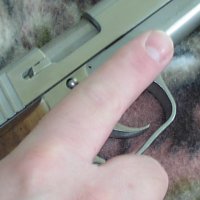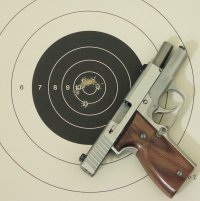|
Four Rules of Firearms Safety
Almost all
firearms accidents are caused by negligence. A set of four
rules has been developed to reduce the occurance of such “accidents”
and to minimize the damage of the negligence that does occur.
Formalized by Col. J. D. Cooper and other instructors and promoted by
the National Rifle Association and similar organizations, these rules
have helped reduce the number fatal firearms accidents in the United
States to statistical insignificance.
The four rules may seem simplistic, but simplicity is part of their
strength. They are easy to remember and easy to practice. The rules
also support each other. More than one
must be violated for a serious “accident” to occur.
|






